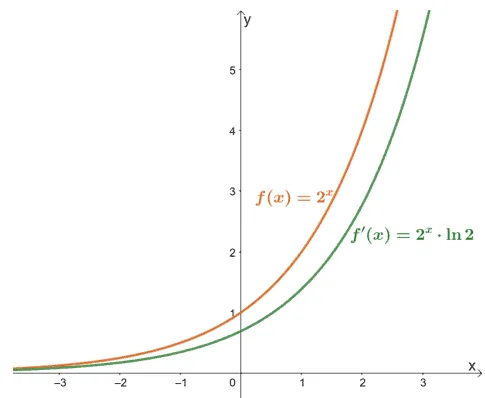- Home
- >
- Exponential derivative – Derivation, Explanation, and Example
JUMP TO TOPIC [show]
Exponential derivative – Derivation, Explanation, and Example
In differential calculus, we’ll need to also establish a rule for exponential derivative. Our discussion will revolve around the formula for
The derivative of an exponential function will be the function itself and a constant factor. A special case occurs for
In this article, we’ll understand how we could come up with the exponential functions’ derivative rules. We’ll also see how we can apply them to differentiate a wide range of functions. This is why it’s important to take a refresher on the following topics:
- Review how we derive derivative rules from the formal definition of derivatives.
- Understand the components of an exponential function.
- Apply the fundamental derivative rules with these new derivative rules.
Let’s begin by understanding the factors that we can find in the exponential function’s derivative. We’ll eventually learn how to apply this rule to solve problems involving exponential functions.
What is the derivative of an exponential function?
Recall that an exponential function has a general form of
Let’s go ahead and observe how an exponential function and its derivative would look like when graphed on an

The graph of
There’s a special case for the exponential derivative rules, which occurs when
These two derivative rules will also apply to composite functions. We have to account for the inner function’s derivative through chain rule.
Here’s a table summarizing the derivative rules for exponential functions:
Derivative Rules Base of | Derivative Rules Base of |
Keep these four variations in mind when working on the sample problems we’ve provided. For now, let’s understand the reason behind these derivative rules by differentiating
Proof of the derivative rule for exponential functions
Recall that
- Use the product rule for exponents,
- Since
- Evaluate the limit by setting
The limit of exponential functions of the form
This confirms the exponential derivative rule –
How to find the derivative of an exponential function?
The most important step in differentiating exponential functions is to make sure that we’re actually working with exponential functions. Make sure that the function has a constant base and
Once we’ve confirmed that the function (or the composite function’s outer layer) has a form of either
- To find the function’s derivative, copy the original function.
- Multiply this with the natural logarithm of the base. (Skip this when working with
- If working with composite functions, multiply the result with the derivative of the inner function.
We’ll show you four examples in which the derivative rule for exponential functions were applied. We’ll include the other rules used whenever possible.
These four examples show us how functions and composite functions can be differentiated using the exponential functions’ derivative rules. Review these four functions and when you’re ready, try out the practice problems below!
Example 1
Find the derivative of the following exponential functions.
a.
b.
c.
Solution
For
The second function is straightforward. We’ll have to apply the difference rule and the exponential function’s derivative rule to determine
Hence, we have
We’ll apply a similar process for
This shows that
Example 2
Find the derivative of the following exponential functions.
a.
b.
c.
Solution
These three sets of functions are composite functions with
With the help of fundamental derivative rules, we have
Hence, we have
- Derivative rule for
- Apply the chain rule and use
This shows that
We’ve been working on differentiating different functions. Why don’t we try using this derivative rule to answer a word problem this time?
Example 3
An organism that is being studied has an initial population of
Solution
Use the natural exponential function’s derivative rule and the chain rule to find the expression for
Now that we have
This shows that the ratio of the rate of change of the population and the actual population size is constant, so Jack is correct.
Practice Questions
1. Find the derivative of the following exponential functions.
a.
b.
c.
2. Find the derivative of the following exponential functions.
a.
b.
c.
3. An organism that is being studied has an initial population of
a. What is the ratio of
b. What is the rate of change of
Answer Key
1.
a.
b.
c.
2.
a.
b.
c.
3.
a.
b.
Images/mathematical drawings are created with GeoGebra.
